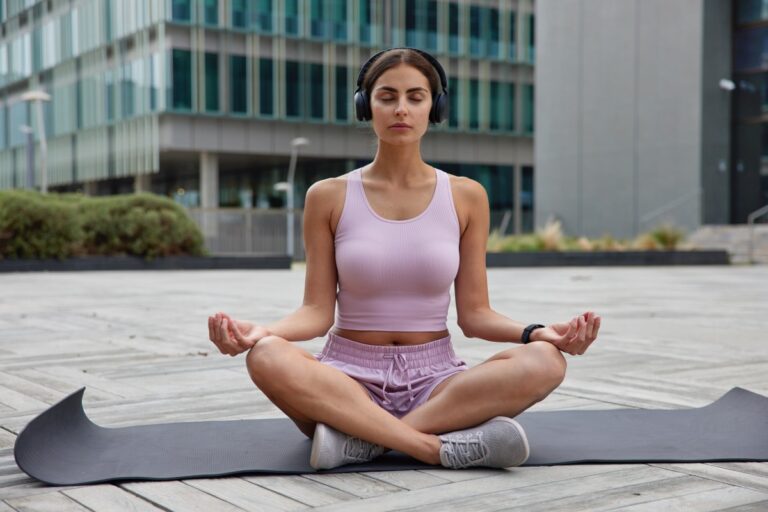Breathwork is an essential yet often overlooked aspect of yoga practice. While many people focus on mastering postures and building flexibility, the way we breathe significantly impacts our ability to deepen our practice, enhance mindfulness, and connect with our inner selves. Understanding the role of breath in yoga can transform your experience, making it more holistic and effective.
The Connection Between Breath and Movement
In yoga, the breath serves as a bridge between the body and the mind. Proper breathing helps synchronize movement, making transitions between poses more fluid and intentional. Many styles of yoga, including Vinyasa and Ashtanga, emphasize linking breath with movement, allowing practitioners to move with greater awareness and control. Each inhale and exhale guides the body, ensuring that postures are performed with balance and stability.
Pranayama: The Art of Breath Control
Pranayama, the yogic practice of breath control, is a fundamental element of yoga. The term “pranayama” is derived from Sanskrit, where “prana” means life force or energy, and “ayama” means expansion or control. Through various breathing techniques, pranayama helps regulate the nervous system, improve lung capacity, and increase focus. Some common pranayama techniques include:
- Ujjayi Breath (Victorious Breath): A deep, oceanic-sounding breath that helps calm the mind and build endurance.
- Nadi Shodhana (Alternate Nostril Breathing): A technique that balances the left and right hemispheres of the brain, promoting mental clarity.
- Kapalabhati (Skull Shining Breath): A rapid, forceful breath that energizes the body and cleanses the respiratory system.
- Bhramari (Bee Breath): A humming breath that soothes anxiety and improves concentration.
Breathwork and Mental Well-Being
One of the most powerful benefits of breathwork is its ability to influence mental well-being. Conscious breathing activates the parasympathetic nervous system, which helps reduce stress and promote relaxation. Deep, slow breathing can lower cortisol levels, alleviate anxiety, and improve emotional stability. For those dealing with high stress or mental fatigue, incorporating breathwork into a yoga routine can offer profound relief.
Additionally, breathwork fosters mindfulness by keeping practitioners anchored in the present moment. By focusing on each inhale and exhale, the mind becomes less prone to distractions, enhancing meditation and self-awareness. Over time, this practice can lead to greater inner peace and emotional resilience.
Enhancing Physical Performance Through Breath
Breathing correctly during yoga not only supports relaxation but also enhances physical performance. Deep diaphragmatic breathing increases oxygen supply to the muscles, reducing fatigue and improving endurance. This is particularly beneficial in challenging poses that require stability and strength.
Furthermore, breathwork can improve flexibility by helping release tension in the muscles. Exhaling deeply while stretching allows the body to relax into poses, preventing strain and discomfort. For those aiming to deepen their stretches or hold poses longer, mindful breathing is a key tool.
How to Incorporate Breathwork into Your Yoga Practice
To fully integrate breathwork into your yoga practice, consider these practical steps:
- Begin with Awareness: Start your practice by taking a few moments to observe your natural breath. Notice its rhythm, depth, and quality without attempting to change it.
- Use Breath as a Guide: Allow your breath to dictate the pace of your movements. Inhale to lengthen and expand, exhale to deepen and release.
- Practice Pranayama Daily: Dedicate a few minutes before or after your yoga session to practice pranayama techniques. Even five minutes of focused breathing can make a difference.
- Stay Consistent: Like any aspect of yoga, breathwork requires consistency. Incorporating it into your routine will help make mindful breathing a natural habit.
- Listen to Your Body: If a breathing technique feels uncomfortable or overwhelming, adjust the pace or try a different method that suits your needs.
Conclusion
Breathwork is the foundation of a successful and fulfilling yoga practice. By mastering breath control, you can enhance movement, improve mental clarity, and deepen your connection with yourself. Whether you are a beginner or an experienced yogi, focusing on your breath will elevate your practice and bring lasting benefits to both body and mind. The next time you step onto your yoga mat, remember that each breath is a tool for transformation—one that leads to greater awareness, balance, and peace.




